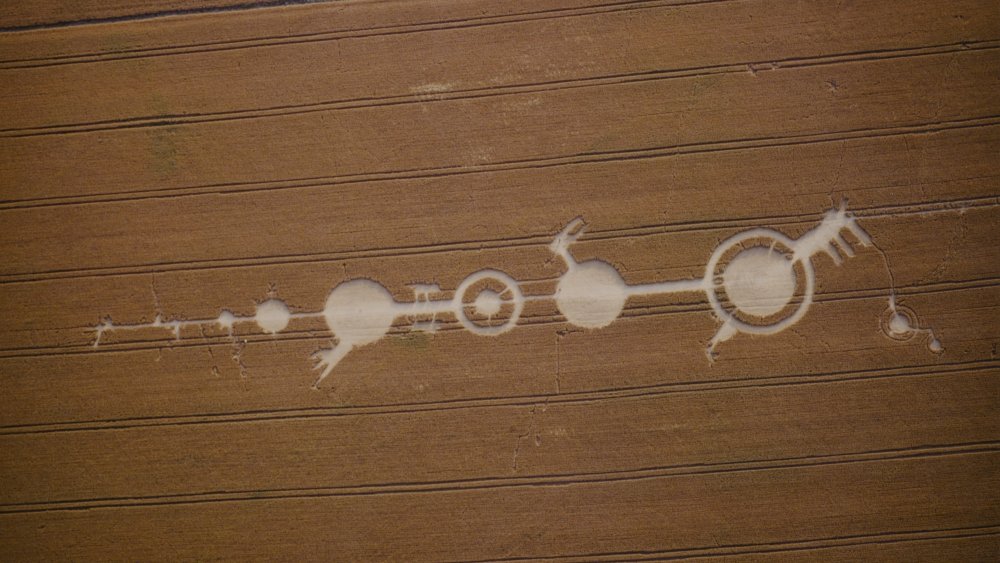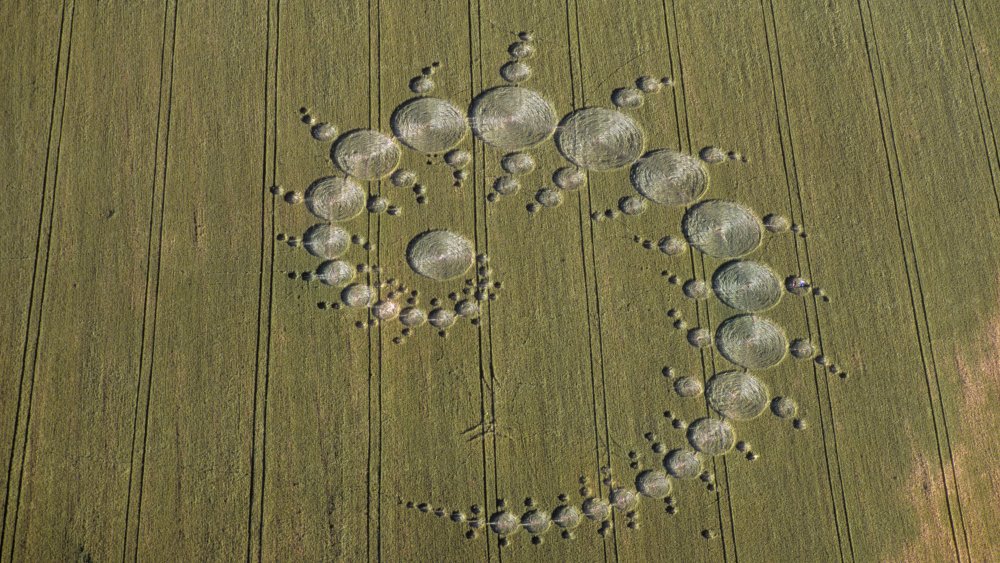The Truth About Crop Circles
Wiltshire, England, has always been a pull for the alternative crowd. The county is home to Stonehenge, the famous and mysterious ring of standing stones that experts believe was built 5,000 years ago. But in the last 50 years, the area has repeatedly hosted one bizarre phenomenon more than anywhere else in the world, and which many like to believe is evidence of alien visitors.
We're talking, of course, about crop circles, which true believers will tell you are the markings of the thrusters and landing gear of spacecraft belonging to beings from another world. Or, possibly, that they are coded messages that have been left behind by elegant technology, according to Live Science.
Whether you've just seen them in an old episode of The X-Files or you're a full-on UFO hunter who's scoured the local countryside for extra-terrestrial landing sites, you're bound to know what a crop circle looks like. They are often exceptionally beautiful. One enthusiast, with a background in fine art, told National Geographic how stunned she was on her first encounter with a crop-circle that employed "13-fold geometry" — the equivalent of cutting a birthday cake into 13 perfectly identical pieces. No easy feat. But is there any chance they are what UFO hunters claim them to be? Or are they the work of talented rural tricksters?
Crop Circles: A Very British Phenomenon
Though crop circles have been known to appear all over the world, according to Britannica, the overwhelming majority have occurred in Wiltshire and the nearby counties of Gloucestershire, Oxfordshire, and Somerset. That seems a mighty small radius for extra-terrestrial visitors to frequent over and over again. Enthusiasts would make the claim that the comparative dearth of crop circles elsewhere in the world would not discount England's being of alien origin, and that the area has special significance — including Stonehenge. Fair enough. There is, however, a more prosaic commonality between the majority of crop circles that have been discovered in the last 50 years or so: their proximity to roads, as noted by Live Science, that suggests a human element is involved in the creation of a majority — or all — of the stunning designs.
Let's not skirt around the evidence any longer. Two British men admitted to the hoax all the way back in 1991, claiming they were inspired by reports in Australia of a pattern that the locals had suggested might have been made by a UFO, according to Nature. They even shared their working practices on camera, which involved a clever — but not particularly technologically innovative — use of rope and wood.
Copycat crop circles continue to appear in the English countryside and elsewhere, and despite the hoaxers revealing their identities, many UFO enthusiasts maintain their interest, in case one turns out to not be man-made at all.

